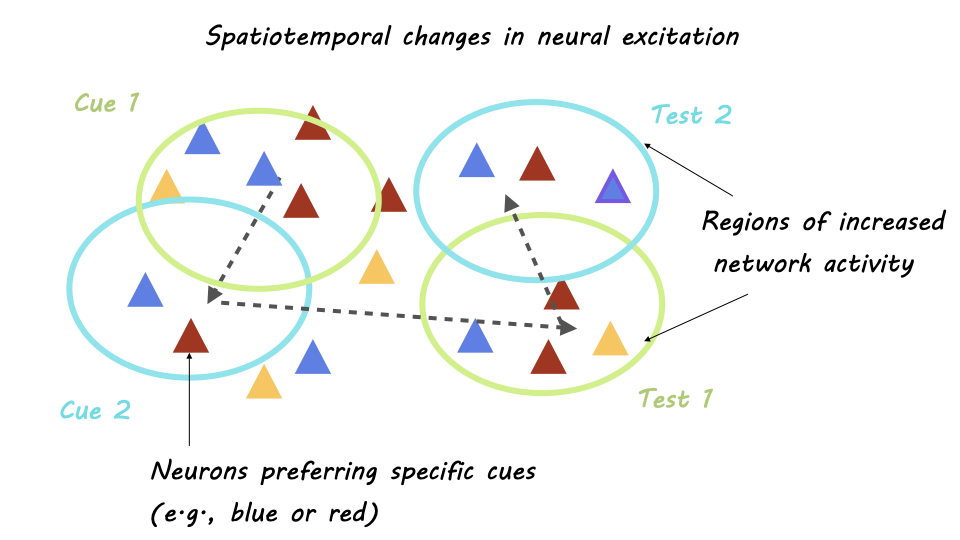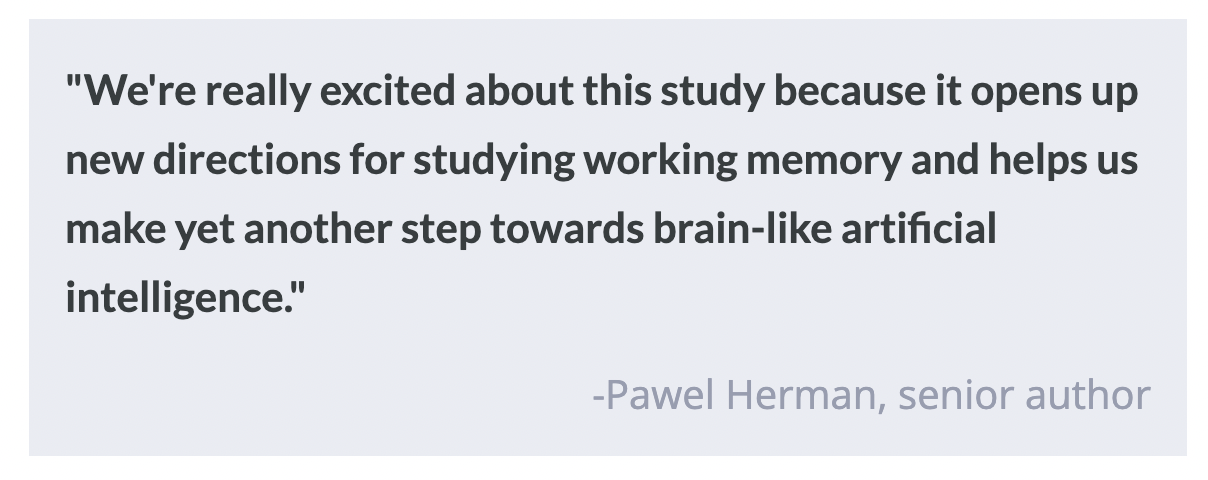Spatial Computing as an Explanation for Working Memory Control
Post by Megan McCullough
The takeaway
Spatial computing, the process of using the spatial dimension in cortical networks to organize information, allows for working memory control. This novel idea for working memory computations helps to explain how the synchronized activity of millions of neurons can control individual pieces of information that are involved in working memory.
What's the science?
Working memory describes the ability to hold information in mind for a short period of time and flexibly use it in the execution of cognitive tasks. Evidence suggests that a coordinated interplay of beta and gamma oscillations (neural oscillations at specific frequency bands) could contribute to this facet of cognition. Since neural oscillations involve the synchronized activity of millions of neurons, it is still unclear how they can facilitate controlled access to individual pieces of information involved in working memory. This week in Nature Communications, Lundqvist and colleagues provide a novel explanation for how the cortical networks manage working memory and then verify this hypothesis by analyzing neuronal activity in monkeys performing different working memory tasks.
How did they do it?
First, the authors proposed a novel explanation for how the flexible access to individual pieces of information (i.e., working memory items) encoded in the activity of millions of neurons can be controlled through spatial computing. According to this spatial computing model, the brain allocates distinct regions across the cortical network for distinct pieces of information held in working memory and then controls these areas through beta-gamma oscillations. The scattering of different items in working memory across network space allows them to be manipulated independently from one another; this explains the flexibility of information in working memory. Importantly, these regions are not static, but change over time to flexibly update the status of each item, for instance when it goes from being the most recent to the second most recent in a sequence.
The authors made four predictions about what they should observe if spatial computing were to be a plausible explanation for how the brain controls information in working memory.
1. Specific information relevant to the task would be encoded by distinct patterns of beta and gamma oscillations.
2. Information would be spatially organized in the network.
3. Spatial patterns pertaining to the rules of the task would be consistent throughout tasks even if the individual information (specific working memory items) changed
4. Neural oscillations would influence the spiking activity of neurons so that they would respond to a mix of external stimuli and task-related context.
The authors then tested these predictions by analyzing beta and gamma burst activity as well as neuronal spiking during working memory tasks. Neurophysiological recordings were conducted from the prefrontal cortex of rhesus monkeys as they performed working memory tasks. The tasks involved the monkeys having to remember the sequence of objects or colored squares and selecting which object flashed in front of them matched a stimulus they were shown previously.
What did they find?
The authors found evidence that supported their spatial computing hypothesis. The authors verified all the predictions; this shows that spatial computing is a plausible explanation for the selective control involved in working memory. Although individual neurons that encode working memory content are scattered around the cortex, there is a mechanism that activates patches of the network. These neurons are then able to flexibly access task-relevant information, which is reflected in the spatial and temporal patterns of beta and gamma activity. In other words, beta and gamma oscillations reflect how the information needed in the task flows spatially across the brain network. How the information flows could be different for different tasks even if the same working memory items are used. The authors found evidence for these differences in varying patterns of beta and gamma activity.
What's the impact?
This study proposes and then provides evidence for spatial computing, a novel explanation for how the brain controls and influences working memory. This offers new research paths into the inner workings of the human mind.


